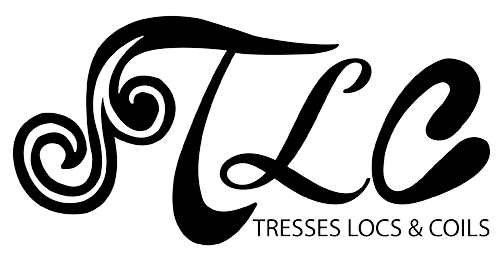Loc Maintenance Methods: Everything You Need to Know
Starting your loc journey but not sure how to keep them maintained? Before you try anything, let’s break down the Three main loc maintenance methods: Palm roll, Interlock and Crochet — how each one works, who they’re good for, and who should avoid them.
1. Palm Rolling – Classic Method for a Smooth, Uniform Look
What Is Palm Rolling?
Palm rolling is a method where you roll each loc between your palms to help it stay tight and smooth from the root to the tip. It’s often done after washing your hair, when it’s still moisturized. You will dry it off completely when it's done.
You’ll usually apply a small amount of locking gel or oil to help the hair hold its shape — but not too much, or you’ll get buildup.
Good for :
Best method to start with for everyone
If you like to maintain a cylindrical, even look with your locs
Good for most hair texture, first method you should start with
Easy to DIY or get done professionally
Cons:
Needs regular maintenance (every 4–6 weeks)
Roots goes out once you wash it (but that just normal)
2. Interlocking – Long-Lasting Hold for Busy or Active People
What’s interlocking:
Interlocking uses a needle-like tool to pull the tip of your loc through the root — tightening the new growth. It’s a bit like weaving your loc into itself. It takes time, but it holds for weeks.
When to do it:
Every 6–10 weeks, depending on hair growth and your activity level.
Good for:
People who work out, sweat a lot, or swim often
Anyone who wants longer-lasting maintenance
Who should avoid it:
If you're tender-headed, just a heads-up: interlocking might not be your favorite — the tool goes through the root several times, which can feel intense.
If your hair is very soft or thin — it can weaken roots if done too tight
If you like a puffier or fuller root — interlocking makes roots tight and flat
3. Crochet Method: Tidy Roots and Frizz-Free Locs with Instant Results
Crochet maintenance is a clean and fast way to keep your locs looking tidy and frizz-free — without twisting, tension, or relying on your hair texture. It uses a small crochet hook to instantly lock in new growth and pull loose hairs into the loc.
It works for all hair textures and gives immediate results that last — even after a wash.
Two Ways to Crochet Maintain Locs
At most salons (especially the professional ones), crochet maintenance can be done in two ways, depending on how much work your locs need:
Root Touch-Up Only (generally what you will get)
This focuses on the first inches or so of new growth. The hook blends the new hairs into the loc without twisting or pulling. It keeps your roots tight and clean while leaving room for growth.
This is quicker, more affordable, and great for routine upkeep.Full Shaft Maintenance (you need to ask for this)
The loctician goes down the full length of the loc, using the hook to clean up frizz and pull in loose hair from the root to the ends.
This takes longer, costs more, and gives your locs a polished, sculpted look.
Healthier Approach to the Crochet Hook
Let’s be clear: real crochet maintenance shouldn’t hurt. Unlike the super-tight, root-yanking stuff you might see on TikTok, a trained loctician leaves space at the scalp to protect your roots and allow natural movement.
👉 You can (and should) talk to your loctician about:
How close to the root you want them to go
Whether you want just the new growth done or the full loc shaft cleaned
Who Crochet Maintenance Is Great For
All hair textures — straight, wavy, curly, coily
People who want their locs to look clean and sculpted
Anyone dealing with frizz, loose hairs, or fuzzy spots
Loc wearers who want to avoid product and twisting
Those who want results that hold up well after washing
When Crochet Might Not Be for You
If you're not ready for the extra time or higher cost, crochet might not be the best fit. It’s typically the most expensive of the three methods because it requires more precision and skill. Pricing often depends on how many locs you have, since more locs means more time and detailed work.
If you're trying to DIY without training — this is a method where skill matters. Bad technique can create holes, stiffness, or breakage, so always go to someone who knows what they’re doing — and is gentle about it.
Final Thoughts: Choosing the Right Loc Maintenance Method for You
Whether you go with palm rolling, interlocking, or crochet, the most important thing is understanding how each method works — and choosing the one that fits your hair, your lifestyle, and your goals.
You also need to consider your schedule, your budget, and how much time you’re really willing to commit. At the end of the day, the best method is the one you can be consistent with. That’s what will keep your locs healthy, strong, and thriving.
